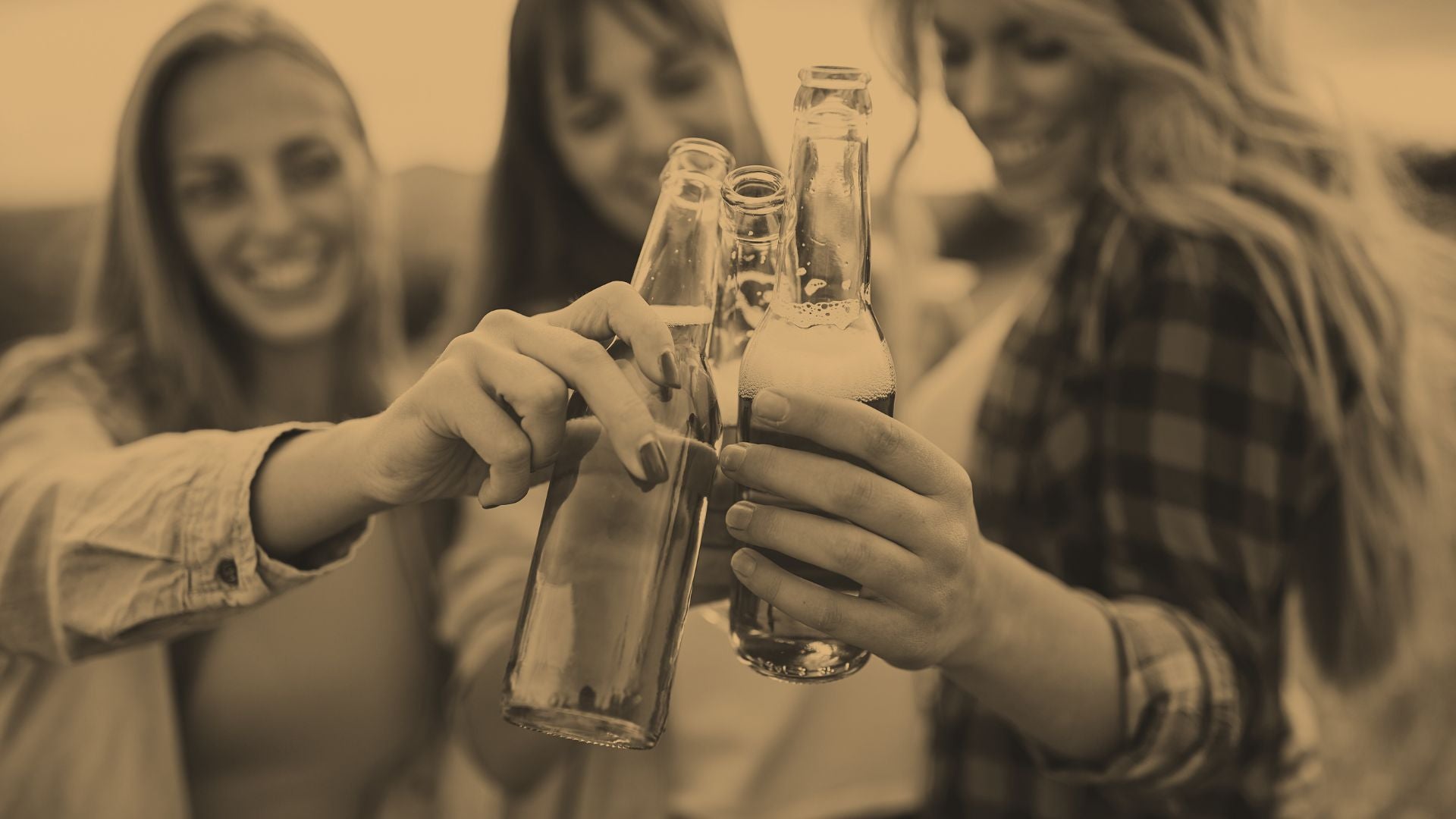
What is the 0-1-2-3 Drinking Rule?
Looking for a strategy to keep your drinking within safe and sensible limits, so you can minimize its negative effects on your health?
Follow the simple 0-1-2-3 Drinking Rule—read on and we’ll explain exactly what that means.
How Much Alcohol Consumption is Too Much?
The official definitions of binge drinking and heavy alcohol use provide some useful guidance on the distinction between moderate and excessive drinking:
What Counts as Binge Drinking?
According to the National Institute on Alcohol Abuse and Alcoholism (NIAAA), binge drinking entails consuming enough alcohol that your blood alcohol concentration (BAC) reaches at least 0.08 percent (i.e., 0.08 grams of alcohol per decileter).
For most adults—specifically, those without any medical conditions that impact their body’s ability to process alcohol normally—this is equal to consuming about four standard drinks for women and five standard drinks for men over roughly two hours.
(Note that the alcohol content of a “standard drink” is equal to 14 grams of pure alcohol. Examples include 12 ounces of regular beer, 5 ounces of wine, or 1.5 ounces of distilled spirits.)
A comparable definition of binge drinking comes from the Substance Abuse and Mental Health Services Administration (SAMHSA), but they define it as happening “on the same occasion” (instead of over two hours): five or more alcoholic drinks for men and four or more alcoholic drinks for women.
How About Heavy Alcohol Use?
The term “heavy alcohol use” refers to binge drinking on a regular basis, a widespread form of substance abuse.
According to NIAAA, this means consuming five or more drinks a day for men, and four or more a day for women; they also define it as 15+ drinks per week for men, or 8+ drinks per week for women.
Meanwhile, SAMSHA states that binge drinking for 5+ days in the previous month constitutes heavy alcohol use, regardless of gender.
What is Alcohol Use Disorder?
Alcohol use disorder (AUD) is a medical condition that arises when you’re unable to moderate your alcohol consumption even in the face of negative consequences that impact your relationships, your job, or your health. It includes a range of terms for alcohol abuse, including alcohol dependence, alcohol addiction, and alcoholism.

Defining the 0-1-2-3 Drinking Rule
Now that you know what experts consider to be excessive alcohol consumption, what’s the best strategy to keep your drinking at moderate levels?
Also known as the NIAAA’s Low Risk Drinking Guidelines, the 0-1-2-3 Drinking Rule follows a simple pattern:
- Zero: There are occasions when the only safe choice is zero drinks, such as when you plan to drive or operate machinery.
- One: Drink up to one drink per hour.
- Two: Drink up to two drinks per occasion.
- Three: Never drink more than three drinks per occasion.
Follow these guidelines to avoid binge drinking, which is powerful enough to alter the function of your amygdala, the brain region that governs emotional processing.
2020–2025 United States Dietary Guidelines for Alcohol Consumption
For further guidance on sensible, moderate alcohol intake, it’s also worth referring to the official guidelines from the NIAAA:
- For men: Two drinks or less per day
- For women: One drink or less per day
Keep in mind that, according to the NIAAA, “these light to moderate amounts are not intended as an average, but rather the amount consumed on any single day.” That means you should avoid having one or two alcoholic drinks every single day.
Helpful Supplements for Pre- and Post-Drinking
While engaging in moderate alcohol consumption, you may still want to support your body’s ability to process alcohol, since it’s a diuretic and can be a drain on your physical resources.
Pre-Drinking: Take PREGAME
Dr. Dan Nguyen, MD, MBA formulated Capsulyte’s PREGAME using evidence-based ingredients to support the body as it processes alcohol:
- NAC, which may reduce negative feelings after drinking
- DHM, an antioxidant and anti-inflammatory
- Clovinol®, which is also an antioxidant/anti-inflammatory and has been shown to minimize negative post-drinking feelings by roughly 55%
- Siliphos®, a derivative of milk thistle that may protect against cirrhosis related to alcoholic liver disease
Post-Drinking: Take HYDRATION
Maintaining your body’s hydration levels is among the most effective ways to minimize uncomfortable feelings after drinking like headaches and nausea. That’s because alcohol is a diuretic that tends to cause dehydration, especially when consumed in larger quantities.
Capsulyte’s HYDRATION contains the following key ingredients:
- Hydra 4G™, an optimal blend of sodium, potassium, magnesium, and calcium
- B vitamins, which may help to regulate energy metabolism, blood cell formation, and neurological function
- Liposomal Pureway C™, an antioxidant that may also support immune function
- Zinc, a mineral that is also important for immune function
For even more science-based advice on lowering the risks and managing the effects of consuming alcohol, check out the Capsulyte blog—it’s updated with new posts on a regular basis.


